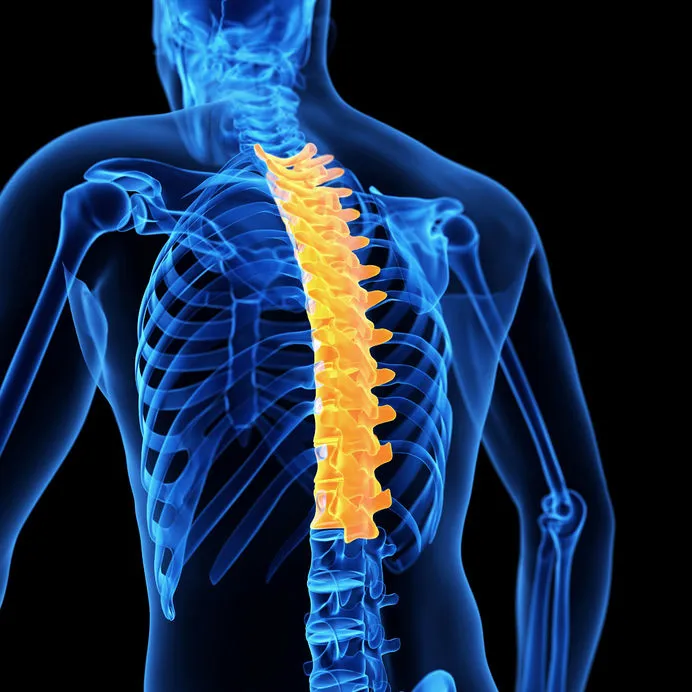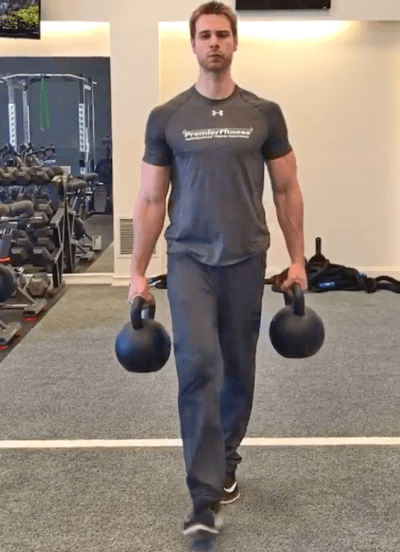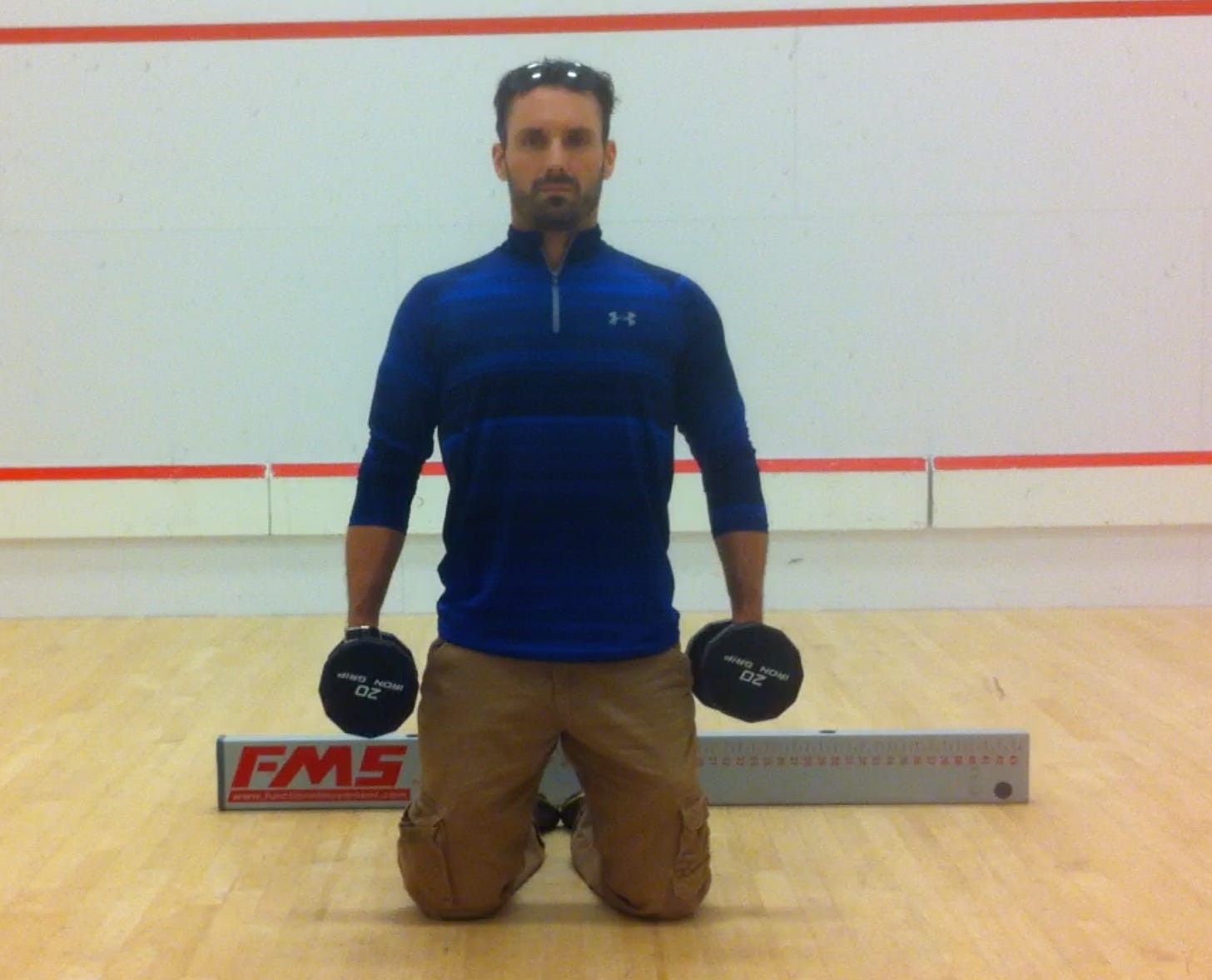
In this author’s last several posts, Vladimir Janda’s upper crossed syndrome (UCS) was explored, in addition to its relationship with the chronic musculoskeletal pain cycle (CMPC) (Page, Lardner, & Frank, 2010). Furthermore, stability and mobility restrictions, two central constituents of UCS, were covered as it related to the thoracic and scapular regions. Finally, methods were presented to reset and reinforce the mobility and stability restrictions within the thoracic spine and scapula, through self-myofascial release (SMR) techniques and corrective exercises. In the following sections, this author will build upon all principles and methods discussed thus far, reloading the thoracic spine and scapular regions, as a means of increasing one’s performance and resilience to re-injury.

Following stretching/mobility drills, and SMR of the rotator cuffs (if TPs are present) and thoracic spine (covered in previous posts), this author would implement postures and exercises to help keep the scapulae in advantageous biomechanical positions (i.e., reinforce). Liebenson (2014) noted that development of the shoulder should first focus upon the intrinsic needs of the scapula: stability, flexibility, balance, strength, and endurance. Thus, exercises chosen would reflect such goalsas a means of developing proximal stability, or a strong base, for the glenohumeral joint and arm to move upon (Liebenson, 2014). The exercise this author will explore, as both a reinforcing and reloading technique, will be the Farmer’s Carry (FC).

The FC is an exercise, which replicates an activity of daily living (ADL) (i.e., carrying objects). Moreover, such an exercise stimulates reflexive activation of rotator cuff muscles while encouraging the client to hold the weight with a tall spine. Sporrong, Palerud, and Herberts (1996) demonstrated that increasing grip strength increases EMG activity of the rotator cuff muscles, which enhances glenohumeral stability without requiring motion of the glenohumeral joint. Additionally, the FC challenges the whole musculoskeletal system in terms of strength, stability, and physiological demands in addition to requiring a very strong grip and core during the walking phase (Winwood, Cronin, Brown, & Keogh, 2014). Such key physiological and biomechanical demands are favourable during early stages of post-rehab when glenohumeral motion under load might be contraindicated.

The FC is regressed back into kneeling/static positions if the client has difficulty maintaining a tall spine with a packed neck and shoulders, and/or difficulty maintaining a level pelvis. The regressions are predicated on the degrees of freedom concepts of Magill (2011), in that this author acknowledges the difficulty clients may initially have managing several joints and muscles simultaneously in a coordinated and harmonious fashion. Thus, the FC begins in simpler positions where there is less movement and less joints involved. As the client masters control of the regressed versions of the FC, gentle progressions are introduced with fewer constraints present. Such a process encourages the client’s sensorimotor system to acclimate to increasing demands in a slow and systematic fashion. Below is a breakdown of FC regressions and progressions:
- Tall-Kneeling FC Holds
- Narrow Half-Kneeling FC Holds
- Narrow Split Stance FC Holds
- Standing FC Holds
- FC
Once a client has mastered proper posture and a degree of strength and stability, the FC can be progressed into a bottoms-up kettlebell carry (BUKC) (with 2 kettlebells initially). The inherent instability of the kettlebell position recruits further grip strength and sensorimotor demands from the client. Following the research by Spoorong et al. (1996) increased demands on grip strength should increase shoulder EMG activity, thereby deepening the requirement of stability from the scapula, rotator cuffs, and core in a reflexive manner. The BUKC can be injected into the FC progressions as follows:
- Tall-Kneeling FC Holds
- Narrow Half-Kneeling FC Holds
- Narrow Split Stance FC Holds
- Standing FC Holds
- FC
- BUKC Holds
- BUKC
To reiterate from this author’s previous posts, several principles are followed when engaging a client in FC and BUKC regressions and progressions:
- Control pain (medical professional intervention)
- Mobility to stability (manual techniques/SMR to stretches to side planks + progressions)
- Supine/prone/tall kneeling/half kneeling/standing/locomotion
- Static to dynamic motions
- Simple to complex motions
- Proximal to distal
- De-loaded to loaded motions
- Exercise progressions (corrective to strength to power to sport-specific skills)
- Determining progressions (based on pain-free status and ability to perform movement competently by the client, and without coaching)
In conclusion, reloading the thoracic spine, scapulae, and rotator cuffs in a pattern such as the FC allows the sensorimotor system to stabilize the shoulders statically, and in a fashion that is meaningful and with purpose (i.e., functional). Moreover, the FC enhances strength, develops the scapulae and core as a base for dynamic glenohumeral motions, and ultimately, improves performance while facilitating reduction of injury.
References
Liebenson, C. (2014). Functional training handbook. Philadelphia, PA: Wolters Kluwer.
Magill, R. A. (2011). Motor learning and control: Concepts and applications (9th ed.). New York: McGraw-Hill.
Page, P., Lardner, R., & Frank, C. (2010). Assessment and treatment of muscle imbalances: The Janda approach.Champaign, IL: Human Kinetics.
Sporrong, H., Palmerud, G., & Herberts, P. (1996). Hand grip increases shoulder muscle activity: An EMG analysis with static hand contractions in 9 subjects. Acta Orthopaedica Scandinavica, 67(5), 485-490.
Winwood, P. W., Cronin, J. B., Brown, S. R., & Keogh, J. W. L. (2014). A biomechanical analysis of the farmerswalk, and comparison with the deadlift and unloaded walk. International Journal of Sports Science & Coaching, 9(5), 1127-1143.
-Michael McIsaac
